
During the 1962 Earles Court Motorcycle Show, Veloce Ltd. were approached by J Lyons Ltd., to supply them with a free standing engine to power their refrigerated vehicles.
This was not the first time Veloce Ltd. had had inquiries about supplying a stationary engine. The previous year they were approached by S.P.D Ltd. who made refrigerated vehicles for Birds Eye foods and by Ice Cream Equipment Ltd about the supply of LE based stationary engines for the refrigeration units of their vehicles.
 The concept of a stationary engine based on the LE appeared to show some promise, the smooth, quiet running water cooled twin appeared to fulfil a corner of the market and there seemed a demand there.
The concept of a stationary engine based on the LE appeared to show some promise, the smooth, quiet running water cooled twin appeared to fulfil a corner of the market and there seemed a demand there.
Veloce Ltd also had considerable expertise by this time, in the small flat twin engine and many common parts and production tooling could be utilised.
At this time motorcycle sales were low and the future of the motorcycle production appeared bleak. The seasonal demand of the motorcycle market caused production and cash flow difficulties and Veloce Ltd were in need of some other product they could make or provide work that could relieve this situation.
So it was decided to go ahead with the Industrial engine project, and by the end of May 1966 the first prototype had been delivered and had undergone a 1000 hour test and proved satisfactory.
and by the end of May 1966 the first prototype had been delivered and had undergone a 1000 hour test and proved satisfactory.
This was not the first time Veloce Ltd. had had inquiries about supplying a stationary engine. The previous year they were approached by S.P.D Ltd. who made refrigerated vehicles for Birds Eye foods and by Ice Cream Equipment Ltd about the supply of LE based stationary engines for the refrigeration units of their vehicles.

 The concept of a stationary engine based on the LE appeared to show some promise, the smooth, quiet running water cooled twin appeared to fulfil a corner of the market and there seemed a demand there.
The concept of a stationary engine based on the LE appeared to show some promise, the smooth, quiet running water cooled twin appeared to fulfil a corner of the market and there seemed a demand there.Veloce Ltd also had considerable expertise by this time, in the small flat twin engine and many common parts and production tooling could be utilised.
At this time motorcycle sales were low and the future of the motorcycle production appeared bleak. The seasonal demand of the motorcycle market caused production and cash flow difficulties and Veloce Ltd were in need of some other product they could make or provide work that could relieve this situation.
So it was decided to go ahead with the Industrial engine project,
 and by the end of May 1966 the first prototype had been delivered and had undergone a 1000 hour test and proved satisfactory.
and by the end of May 1966 the first prototype had been delivered and had undergone a 1000 hour test and proved satisfactory. Veloce Ltd, however, were unable to supply the engines by the required deadline and their customer was forced to seek out an alternative engine to supply their immediate needs.
Approximately 50 engine units were supplied to A.C. Morrison Ltd., which were fitted into ice cream vans and delivered to a customer in Australia, a creamy type ice cream supplier trading as "Mr. Whippy". They used modified Bedford vans with the refrigeration unit mounted up on the cab in a metal box and the company franchised them to individuals who drove around suburban streets, usually on a weekend playing the tune "Greensleeves" from a loud speaker to attract customers. They also parked outside sporting venues etc.
Approximately 50 engine units were supplied to A.C. Morrison Ltd., which were fitted into ice cream vans and delivered to a customer in Australia, a creamy type ice cream supplier trading as "Mr. Whippy". They used modified Bedford vans with the refrigeration unit mounted up on the cab in a metal box and the company franchised them to individuals who drove around suburban streets, usually on a weekend playing the tune "Greensleeves" from a loud speaker to attract customers. They also parked outside sporting venues etc.
The engines proved to be troublesome and were replaced. The Australian customer refused to pay Morrisons and they in turn sued Veloce Ltd. for the cost of their replacement, some £12,000. Veloce Ltd. counter sued for £3,648 for non payment of the debt for the supply of the engines. The legal proceedings dragged on for some years until they were finally withdrawn in 1970 and Morrisons later went into liquidation.
It seems that in accepting the order for the engines, Veloce Ltd were bound by conditions, one of which was a 12 month guarantee. For the continuous use to which these engines were put, in the ice cream business in sub-tropical climates, this could easily amount to the equivalent of 100,000 road miles for an LE; a ridiculous guarantee life for a 192cc engine.
A successful claim by Morrisons could possibly have caused the earlier demise of Veloce Ltd and the industrial engine saga proved to be very unfortunate after appearing to hold such promise.
Peter Wolfenden, current Aust. Velo OC membership secretary and "Mr LE" in Australia compiled this article and initially published it in the UK LE Owners club magazine, then again in revised format in FTDU (Peter sourced information for this article from “A History of Veloce Ltd.”, by Joseph W.E .Kelly)
Veloce Ltd.”, by Joseph W.E .Kelly)

It seems that in accepting the order for the engines, Veloce Ltd were bound by conditions, one of which was a 12 month guarantee. For the continuous use to which these engines were put, in the ice cream business in sub-tropical climates, this could easily amount to the equivalent of 100,000 road miles for an LE; a ridiculous guarantee life for a 192cc engine.
A successful claim by Morrisons could possibly have caused the earlier demise of Veloce Ltd and the industrial engine saga proved to be very unfortunate after appearing to hold such promise.
Peter Wolfenden, current Aust. Velo OC membership secretary and "Mr LE" in Australia compiled this article and initially published it in the UK LE Owners club magazine, then again in revised format in FTDU (Peter sourced information for this article from “A History of
 Veloce Ltd.”, by Joseph W.E .Kelly)
Veloce Ltd.”, by Joseph W.E .Kelly) I owned the engine pictured, which had an engine number "SE151"..."stationary engine 151??".
I acquired it from the chap who came out with the ice-cream vans referred to above and who saved one engine after they were scrapped, using a single cylinder Kirby engines as a replacement. He told me the Velo engines failed in the Australian summer, 40+ degrees C and the engine running at 3500rpm continuously by the governor under load, driving the refrigeration unit and in a metal case housing, with little air movement & the engine using no water pump, just the thermo-syphon principle to circulate water around the engine castings to the small radiator ( identical to the LE motorcycles)...a disaster. Many only lasted several hours.
Veloce contested this claim during the legal stoush, and claimed to have run the engine on their dynomometer for 1000+ hours... probably true, but likely in an air temperature of 20 degrees C.
Quite unrealistic for their impending use.
I never ran the engine as such, but it has a 12v dynastarter( a combined generator and starter motor) behind the distributor at the front and so I ran it on the starter.
The dynastart and distributor stuck out so far at the front , that it would not have been possible to fit it into the LE frame and the sump was a large cast-iron casting.
The engine had caged roller big end bearings, visible in the exploded diagrams.
Veloce were obviously serious, as they produced a spare parts booklet, illustrated above ( which I still have). The engine is now owned by Peter Wolfenden.
Left click on the photos to enlarge.
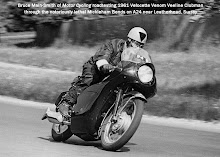

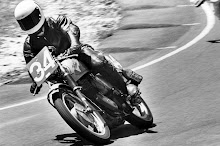

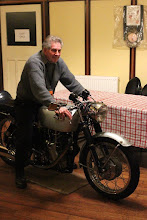
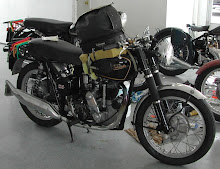
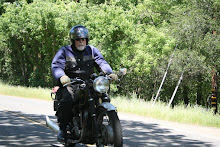


2 comments:
Hi there. Nice blog. You have shared useful information. Keep up the good work! This blog is really interesting and gives good details.hydraulic cylinders, Industrial Hydraulic Cylinders.
Man, great blog. I just love reading about older machines and Industrial Engines. The quality is just out of this world sometimes.
Post a Comment